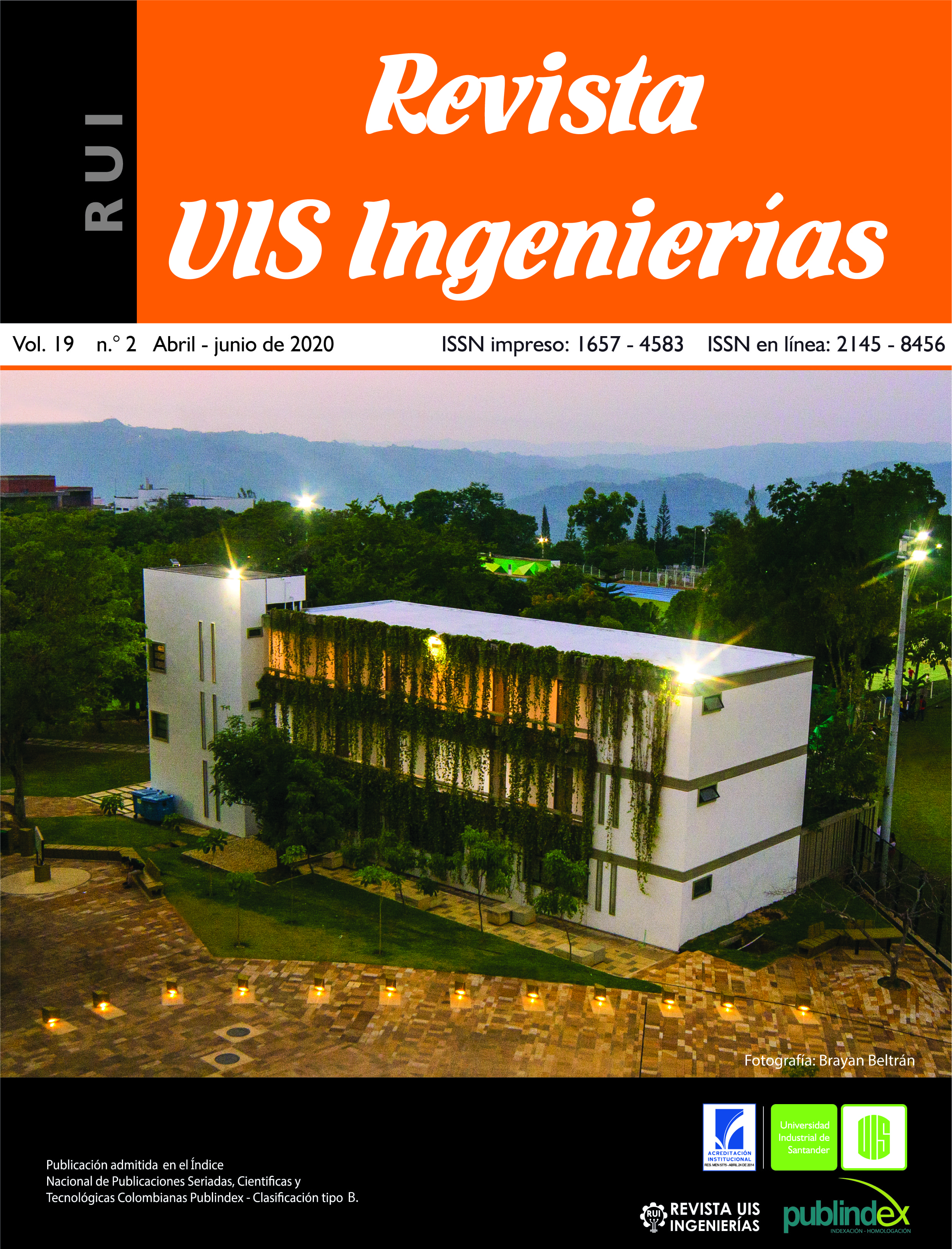Aerodynamic performance analysis of a delta wing at low speed: Aerodynamic performance analysis of a delta wing at low speed
Published 2020-03-18
Keywords
- delta wing,
- flow visualization,
- aerodynamic performance
How to Cite
Copyright (c) 2020 Revista UIS Ingenierías

This work is licensed under a Creative Commons Attribution-NoDerivatives 4.0 International License.
Abstract
In the present work, the results of the experimental measurement of the aerodynamic coefficients of a Delta wing are presented, the determined coefficients were the one of lift, drag and the moment, in addition a visualization was made of the behavior of the fluid that passes over the wing by the use of smoke and a liquid oil compound on the surface of the wing. The results obtained are comparable with the theory of Polhamus as well as good agreement with experimental ones presented in the literature.
Downloads
References
[2] T. K. D. Hoang, P. K. Nguyen, and Y. Nakamura, "High Swept-Back Delta Wing Flow," Advanced Materials Research, vol. 1016, pp. 377-382, 2014, doi: 10.4028/www.scientific.net/AMR.1016.377
[3] J. Katz and A. Plotkin, Low speed aerodynamics, 2nd ed. (Cambridge aerospace series, no. 13). Cambridge, UK ; New York: Cambridge University Press, 2001, pp. xvi, pp. 613.
[4] S. Saha and B. Majumdar, "Flow Visualization and CFD Simulation on 65° Delta Wing at Subsonic Condition," Procedia Engineering, vol. 38, pp. 3086-3096, 2012/01/01/ 2012, doi: 10.1016/j.proeng.2012.06.359
[5] J. D. Anderson, Fundamentals of aerodynamics, 3rd ed. (McGraw-Hill series in aeronautical and aerospace engineering). Boston: McGraw-Hill, 2001, doi: 10.2514/2.1385
[6] G. Guglieri and F. B. Quagliotti, "Experimental investigation of vortex dynamics on a 65° delta wing in sideslip," The Aeronautical Journal (1968), vol. 101, no. 1003, pp. 111-120, 1997, doi: 10.1017/S0001924000066586
[7] A. Z. Al-Garni, F. Saeed, and A. M. Al-Garni, "Experimental and Numerical Investigation of 65 Degree Delta and 65/40 Degree Double-Delta Wings," Journal of Aircraft, vol. 45, no. 1, pp. 71-76, 2008, doi: 10.2514/1.20243
[8] R. M. Cummings, J. R. Forsythe, S. A. Morton, and K. D. Squires, "Computational challenges in high angle of attack flow prediction," Progress in Aerospace Sciences, vol. 39, no. 5, pp. 369-384, 2003, doi: 10.1016/S0376-0421(03)00041-1
[9] E. C. Polhamus, "A concept of the vortex lift of sharp-edge delta wings based on a leading-edge-suction analogy," Natl. Aeronaut. Sp. Adminstrations, pp. 18, 1966, doi: 10.1088/0143-0807/36/6/065030
[10] R. E. Gordnier and M. R. Visbal, "Compact Difference Scheme Applied to Simulation of Low-Sweep Delta Wing Flow," AIAA Journal, vol. 43, no. 8, pp. 1744-1752, 2005, doi: 10.2514/1.5403
[11] M. Hahn and D. Drikakis, "Implicit Large-Eddy Simulation of Swept-Wing Flow Using High-Resolution Methods," AIAA Journal, vol. 47, no. 3, pp. 618-630, 2009, doi: 10.2514/1.37806
[12] F. M. White, Fluid mechanics, 7th ed. New York, N.Y.: McGraw Hill, 2011, pp. xv, 862 p.
[13] E. C. Polhamus, "Predictions of vortex-lift characteristics by a leading-edge suctionanalogy," Journal of Aircraft, vol. 8, no. 4, pp. 193-199, 1971, doi: 10.2514/3.44254
[14] S. B. Wibowo et al., "An investigation into the use of GAMA water tunnel for visualization of vortex breakdown on the delta wing," AIP Conference Proceedings, vol. 2001, no. 1, p. 050007, 2018/08/16 2018, doi: 10.1063/1.5049998

